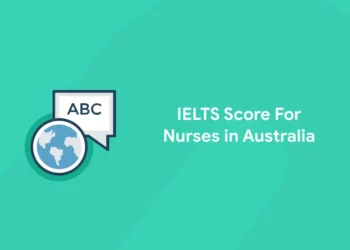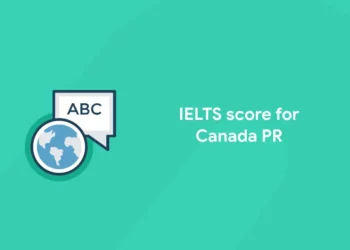Table of Contents
Embarking on the journey of pursuing a Master’s degree marks a profound step toward academic and professional growth. Amidst the array of components in the application process, the Statement of Purpose (SOP) stands out as a critical document that can significantly influence the admission decision. By navigating through the intricacies of SOP construction, we not only underscore its pivotal importance but also provide a roadmap for aspiring students, facilitating their endeavor to craft compelling narratives that resonate with admission committees. This comprehensive guide aims to unravel the essence of an SOP, shedding light on its multifaceted role in portraying an applicant’s aspirations, achievements, and suitability for a Master’s program.
CRACK IELTS EXAM WITH ONLINE COACHING – JOIN NOW
Statement Of Purpose: Overview
- The Statement of Purpose (SOP) is a pivotal element in the arsenal of documents submitted during the graduate school application process.
- It serves as a window into the applicant’s academic journey, professional aspirations, and personal motivations for pursuing an advanced degree.
- More than just a formal requirement, the SOP encapsulates the individual’s narrative, allowing admissions committees to peer beyond grades and test scores.
- The SOP is an opportunity for applicants to articulate their passion, delineate their goals, and present a compelling case for why they are a perfect fit for the program.
- Its essence lies in its ability to transcend a mere written document; it is a personalized manifesto that breathes life into academic transcripts and recommendation letters.
- By unpacking the essence of an SOP, applicants can harness its potential to stand out amidst the sea of applications, making a lasting impression on those tasked with the responsibility of selecting candidates for graduate programs.
Statement Of Purpose: Distinctions
1: Most university students ........................ on campus in their first year.
- In the intricate landscape of graduate school applications, it is crucial to navigate the nuances that differentiate an SOP from other components like personal statements and letters of intent.
- While these documents may seem interchangeable, each serves a distinct purpose.
- The SOP, in essence, is a comprehensive document that articulates an applicant’s academic and professional journey, providing insights into their motivations, experiences, and goals.
- On the other hand, a personal statement delves more into the individual’s personal background, emphasizing aspects of character, upbringing, and life experiences.
- A letter of intent, while sharing similarities, typically focuses on an applicant’s intentions and aspirations related to the chosen program or position.
- By clarifying these distinctions, applicants can tailor each document to fulfill its unique role, presenting a holistic and well-rounded perspective to the admissions committee.
- This nuanced approach ensures that the application package collectively provides a comprehensive view of the applicant, enhancing their chances of standing out in the competitive admission process.
Ace Your IELTS Exam with Confidence!
Unlock your potential with our expert-led IELTS preparation course. Achieve your dream score and open doors to global opportunities!
Start Your IELTS Journey Today!Statement Of Purpose: Significance
Whether you are a prospective graduate student seeking admission or an individual intrigued by the anatomy of a compelling SOP, this guide is designed to provide valuable insights, demystify complexities, and empower you on your academic journey. In this exploration, we will delve into the nuances of SOP content, delve into the ideal format tailored for MS courses, and offer tangible samples to illuminate the art of SOP creation.
Showcasing Your Unique Identity
- The significance of an SOP lies in its transformative power to elevate an applicant beyond the realm of mere academic achievements and standardized test scores.
- Serving as a canvas for self-expression, the SOP allows applicants to infuse their unique identity, experiences, and aspirations into a coherent narrative.
- It transcends the quantitative metrics that often dominate academic evaluations, providing a platform for individuals to narrate their distinctive stories.
- Through the SOP, applicants can articulate what makes them stand out, sharing personal anecdotes, triumphs, and challenges that have shaped their academic and personal journey.
- This showcasing of unique identity not only humanizes the application process but also enables admissions committees to connect with the individual behind the documents, fostering a more holistic understanding of the applicant.
Demonstrating Intentions
- An effective SOP serves as a strategic tool for applicants to articulate their academic and professional intentions with clarity and coherence.
- It goes beyond a mere enumeration of accomplishments, delving into the ‘why’ behind an individual’s pursuit of a Master’s degree.
- By weaving together academic achievements, research experiences, and professional milestones, applicants can present a comprehensive narrative that showcases a deliberate and thoughtful trajectory.
- This section of the SOP is where applicants can convey not only what they have achieved but also how these accomplishments align with their broader academic and career goals.
- Through this demonstration of intent, the SOP becomes a roadmap, guiding admissions committees through the applicant’s past achievements while illuminating the path they envision for their future academic and professional endeavors.
Highlighting the Program
- Aligning personal ambitions with the intricacies of a specific Master’s (MS) course is a fundamental aspect that elevates the SOP’s significance.
- This section serves as a compass, guiding the admissions committee through the applicant’s rationale for choosing a particular MS course.
- It is not merely about expressing interest; rather, it’s about crafting a narrative that convincingly communicates why the chosen program is the ideal crucible for the applicant’s intellectual and professional growth.
- By accentuating this alignment, the SOP transforms into a persuasive document that not only qualifies the applicant for the program but also elucidates how their unique blend of experiences and aspirations harmonizes seamlessly with the offerings of the MS course.
- In doing so, the SOP becomes a beacon that illuminates the synergy between the applicant’s ambitions and the educational path they aspire to traverse, leaving an indelible mark on the discerning eyes of the admissions committee.
Statement Of Purpose: Format for MS Courses
The format of an SOP for MS courses is not just a structure; it’s a narrative architecture that allows applicants to artfully weave their academic, professional, and personal threads into a compelling tapestry. Each section serves a distinct purpose, contributing to a holistic portrayal that extends beyond academic transcripts and test scores, presenting the applicant as a multifaceted individual with a purposeful journey and a clear vision for the future.
Introduction
- The introduction of an SOP is akin to the opening act of a captivating performance—it sets the tone and captivates the audience.
- Crafting a compelling introduction is not merely about stating intentions but creating an engagement that resonates with the reader.
- Whether it’s a thought-provoking anecdote, a profound statement, or a succinct description of a pivotal experience, the introduction should be a literary handshake that draws the reader into the applicant’s narrative.
- By weaving in an element of intrigue or highlighting a personal connection to the chosen field, the introduction becomes the gateway to a narrative that promises depth, purpose, and a unique perspective, compelling the reader to delve further into the applicant’s story.
Educational Background and Career Objectives
- This section of the SOP is where the applicant paints a vivid picture of their academic journey.
- Detailing educational background involves more than a recitation of grades—it’s an opportunity to highlight academic milestones, coursework, and projects that have shaped the applicant’s intellectual growth.
- Concurrently, outlining career objectives involves projecting a vision beyond the academic realm. It’s about elucidating how the chosen Master’s program fits into the broader tapestry of the applicant’s professional ambitions.
- This section serves as a bridge, connecting past academic achievements with future career aspirations, establishing a cohesive narrative that demonstrates a logical progression toward the pursuit of a Master’s degree.
Relevance of the Chosen MS Course
- At the heart of the SOP lies the pivotal section articulating why the chosen Master’s (MS) course is more than just a stepping stone—it’s a transformative vehicle for academic and professional growth.
- This involves more than a generic expression of interest; it requires a tailored narrative that weaves the applicant’s background and aspirations into the unique fabric of the program.
- By delineating specific features, faculty expertise, or distinctive opportunities offered by the MS course, the applicant not only demonstrates meticulous research but also underscores the symbiotic relationship between their goals and the program’s offerings.
Research
- In this section, the applicant has the opportunity to showcase the depth of their academic prowess and engagement.
- By delving into research experiences, academic accolades, and noteworthy projects, the SOP transforms into a testament of the applicant’s intellectual curiosity and capacity for scholarly contribution.
- It’s not merely a list of achievements but a narrative that explains the relevance of each experience to the applicant’s academic journey and the specific MS course.
- This section provides the admissions committee with a glimpse into the applicant’s academic journey, substantiating their claim to be a valuable addition to the academic community.
Professional Experience
- For applicants with professional experience, this section serves as a crucial link between their past career and the pursuit of an advanced degree.
- By integrating work experiences into the narrative, the applicant illustrates how their professional journey has honed skills, provided insights, and motivated the decision to pursue a Master’s degree.
- This is not about mere employment history; it’s about elucidating the impact of professional experiences on the applicant’s academic ambitions.
- Through this integration, the SOP presents a comprehensive portrait, demonstrating the synergy between practical insights gained in the professional realm and the theoretical foundation sought through the MS course.
Outlining Ambitions
- As the narrative progresses, the SOP pivots toward the future—a future intricately connected to the chosen MS course.
- This section outlines the applicant’s aspirations, detailing how the knowledge and skills acquired through the program will be instrumental in achieving long-term goals.
- It’s not just about academic aspirations but a visionary outlook that envisions a broader impact on the professional landscape.
- By aligning these ambitions with the specific strengths of the MS course, the applicant presents a compelling argument for why they are not just seeking education but actively contributing to the evolution of their chosen field.
Conclusion
- The conclusion of the SOP is the final brushstroke on the canvas—a culmination of the applicant’s journey and a call to action.
- A well-crafted conclusion reinforces the key messages of the SOP, summarizing the essence of the applicant’s story while leaving a lasting impression.
- It’s an opportunity to reiterate the alignment between the applicant’s unique journey and the MS course, expressing gratitude for the opportunity and leaving the reader with a sense of anticipation.
- The conclusion, much like the introduction, should linger in the reader’s mind, solidifying the applicant as a memorable and fitting candidate for the Master’s program.
Statement Of Purpose: Samples
Embarking on the journey of crafting a Statement of Purpose (SOP) can be both enlightening and challenging. To facilitate a deeper understanding of the art of SOP creation, let’s delve into illustrative samples tailored for specific Master’s programs. These examples are not templates to be copied but rather guides to inspire and guide applicants as they articulate their unique narratives.
Engineering (Example)
In the pursuit of an MS in Engineering, an applicant’s SOP becomes a narrative bridge between their past experiences and their aspirations within the dynamic realm of engineering. This sample SOP, crafted for an Engineering application, skillfully navigates the technological landscape. The applicant begins by capturing attention through a personal anecdote that sparked their passion for engineering. The SOP then seamlessly transitions into detailing academic achievements, emphasizing relevant coursework, and highlighting how specific research experiences have fueled their curiosity. The applicant artfully weaves in their professional journey, emphasizing how work experiences have provided a real-world context for their academic pursuits. This SOP concludes with a forward-looking vision, illustrating how the MS in Engineering is the natural next step in their journey, providing the tools to make meaningful contributions to the field.
Business Administration (Example)
For those aspiring to pursue an MS in Business Administration, this SOP sample serves as a beacon for navigating the complex intersection of business acumen and leadership aspirations. The narrative unfolds with a compelling introduction that alludes to the applicant’s transformative moments in the business world. As the SOP progresses, the applicant meticulously outlines their educational background, emphasizing how their undergraduate studies laid the groundwork for a keen understanding of business dynamics. Importantly, the sample demonstrates a seamless integration of professional experiences, showcasing how each role has contributed to the applicant’s evolving perspective on effective leadership. This SOP concludes with a powerful statement of purpose for the future, articulating a vision of leveraging the skills gained through the MS in Business Administration to drive impactful change in the professional arena.
Computer Science (Example)
In the realm of Computer Science, an MS application requires an SOP that not only showcases technical proficiency but also demonstrates a passion for innovation and problem-solving. This sample SOP for Computer Science commences with an engaging introduction that hints at the applicant’s journey into the world of coding and algorithms. The educational background section carefully details coursework and projects, emphasizing a thirst for knowledge and a track record of excellence. The inclusion of research experiences sheds light on the applicant’s active participation in pushing the boundaries of computer science. Furthermore, the SOP illustrates how professional experiences have complemented academic pursuits, creating a holistic understanding of the field. The conclusion ties these elements together, expressing a fervent desire to contribute to the ever-evolving landscape of Computer Science through the pursuit of an MS degree.
Ace Your IELTS Exam with Confidence!
Unlock your potential with our expert-led IELTS preparation course. Achieve your dream score and open doors to global opportunities!
Start Your IELTS Journey Today!Statement Of Purpose: IELTS Course
Crafting a compelling Statement of Purpose (SOP) not only demands meticulous content structuring but also places a premium on language proficiency. In this section, we delve into the crucial role of English proficiency in SOPs and explore the benefits of undertaking an IELTS course to elevate language proficiency for SOP excellence.
The Role of English Proficiency in SOPs
- An SOP is not merely a collection of thoughts and experiences; it’s a literary expression that demands precision, clarity, and eloquence.
- English proficiency plays a pivotal role in ensuring that the nuances of an applicant’s narrative are effectively communicated.
- Admissions committees look beyond content; they assess how well an applicant can articulate their ideas, aspirations, and experiences.
- Impeccable language proficiency is not just a formal requirement; it’s the key to making a lasting impression.
- Grammatical accuracy, a rich vocabulary, and a nuanced command of language contribute to the overall impact of the SOP.
- An SOP that reflects mastery of English not only enhances the applicant’s credibility but also communicates a commitment to excellence in academic and professional communication.
A Note by Entri
Undertaking an IELTS (International English Language Testing System) course emerges as a strategic step in fortifying language proficiency for SOP writing. IELTS, a globally recognized language proficiency test, is specifically designed to assess a candidate’s ability to comprehend, communicate, and engage in English. The benefits extend beyond test preparation, positively impacting the applicant’s ability to craft a compelling SOP. The course provides a structured environment for honing language skills, covering aspects such as reading, writing, listening, and speaking.
CRACK IELTS EXAM WITH ONLINE COACHING – JOIN NOW
Statement Of Purpose: Conclusion
In conclusion, mastering the art of crafting a compelling SOP is a vital skill for any graduate school applicant. By understanding the intricacies of an SOP, recognizing its significance, and following a structured format, applicants can elevate their chances of securing admission to their desired MS courses. The inclusion of SOP samples offers tangible examples, providing invaluable guidance for aspiring students navigating the competitive landscape of graduate school applications. Additionally, acknowledging the role of language proficiency, such as through an IELTS course, adds an extra layer of refinement to the SOP, ensuring it resonates with clarity and precision. Armed with this knowledge, prospective MS students can confidently articulate their academic journey and professional aspirations, setting the stage for a successful pursuit of higher education.
Statement Of Purpose: FAQ’s
1. Q: What is the purpose of a Statement of Purpose (SOP)?
A: The SOP is a crucial document in graduate school applications, providing insights into your academic background, goals, and reasons for pursuing a specific program.
2. Q: How do I start my SOP?
A: Begin with a compelling introduction that grabs the reader’s attention, possibly with a personal anecdote or a profound statement.
3. Q: Can I use the same SOP for different universities?
A: While you can have a foundational SOP, it’s advisable to tailor it for each university, incorporating specific reasons why you’re a good fit for each program.
4. Q: How long should my SOP be?
A: SOP length varies, but it’s generally between 500 to 1,000 words. Check the application guidelines for specific requirements.
5. Q: What’s the difference between an SOP and a personal statement?
A: While similar, an SOP typically focuses more on academic and research interests, whereas a personal statement may delve into personal experiences.
6. Q: Should I include my weaknesses in an SOP?
A: It’s okay to mention challenges, but frame them positively, emphasizing what you’ve learned and how you’ve grown.
7. Q: Can I mention specific professors in my SOP?
A: Yes, if you have identified professors whose work aligns with your interests, mentioning them can strengthen your SOP.
8. Q: Is there a specific format for an SOP?
A: Generally, follow a professional format with a clear introduction, body, and conclusion. Use a standard font and adhere to any specific guidelines provided by the university.
9. Q: How important is language proficiency in an SOP?
A: Language proficiency is crucial. Ensure your SOP is well-written, free of grammatical errors, and demonstrates a command of the English language.









